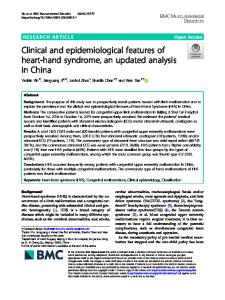Flame Retardants and Neurodevelopment: an Updated Review of Epidemiological Literature
- PDF / 677,653 Bytes
- 17 Pages / 595.276 x 790.866 pts Page_size
- 2 Downloads / 291 Views
ENVIRONMENTAL EPIDEMIOLOGY (A MORA, B ESKENAZI AND S SAGIV, SECTION EDITORS)
Flame Retardants and Neurodevelopment: an Updated Review of Epidemiological Literature Ann M. Vuong 1
&
Kimberly Yolton 2,3 & Kim M. Cecil 4 & Joseph M. Braun 5 & Bruce P. Lanphear 6 & Aimin Chen 7
Accepted: 14 October 2020 # Springer Nature Switzerland AG 2020
Abstract Purpose of Review Flame retardant (FR) compounds can adversely impact neurodevelopment. This updated literature review summarizes epidemiological studies of FRs and neurotoxicity published since 2015, covering historical (polybrominated biphenyls [PBBs], polychlorinated biphenyls [PCBs]), contemporary (polybrominated diphenyl ethers [PBDEs], hexabromocyclododecane [HBCD], and tetrabromobisphenol A [TBBPA]), and current-use organophosphate FRs (OPFRs) and brominated FRs (2-ethylhexyl 2,3,4,5-tetrabromobezoate [EH-TBB] TBB), bis(2-ethylhexyl) tetrabromophthalate [BEHTEBP]), focusing on prenatal and postnatal periods of exposure. Recent Findings Continuing studies on PCBs still reveal adverse associations with child cognition and behavior. Recent studies indicate PBDEs are neurotoxic, particularly for gestational exposures with decreased cognition and increased externalizing behaviors. Findings were suggestive for PBDEs and other behavioral domains and neuroimaging. OPFR studies provide suggestive evidence of reduced cognition and more behavioral problems in children. Summary Despite a lack of studies of PBBs, TBBPA, EH-TBB, and BEH-TEBP, and only two studies of HBCD, recent literature of PCBs, PBDEs, and OPFRs are suggestive of developmental neurotoxicity, calling for more studies of OPFRs. Keywords Flame retardants . Developmental neurotoxicity . Children . Cognition . Behavior . Epidemiology
Introduction Flammability regulations required that chemical flame retardants (FRs) be embedded in consumer products, including textiles, plastics, furnishings, electronics, building materials, and transportation products, to reduce flame propagation and prevent combustion. Historical FRs, polybrominated biphenyls (PBBs) and polychlorinated biphenyls (PCBs), were
initially used due to their resistance to fire. However, most industrialized nations banned their production amid evidence supporting their toxicity, major accidental human poisoning incidents, and their persistence in the environment and in humans [1–4]. Contemporary FRs, including polybrominated diphenyl ethers (PBDEs), hexabromocyclododecane (HBCD), and tetrabromobisphenol A (TBBPA), replaced PBBs and PCBs. Since the 1970s, PBDEs have been the most
This article is part of the Topical Collection on Environmental Epidemiology * Ann M. Vuong [email protected] 1
Department of Epidemiology and Biostatistics, School of Public Health, University of Nevada, Las Vegas, Las Vegas, NV, USA
2
Division of General and Community Pediatrics, Department of Pediatrics, Cincinnati Children’s Hospital Medical Center, Cincinnati, OH, USA
3
Department of Pediatrics, University of Cincinnati College of Medicine, Cincinnati, OH, USA
Data Loading...











